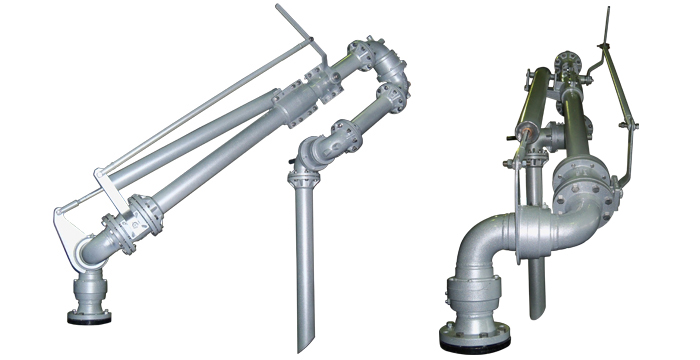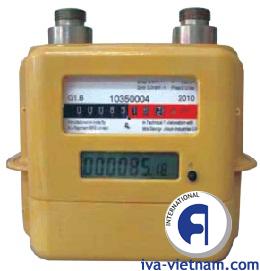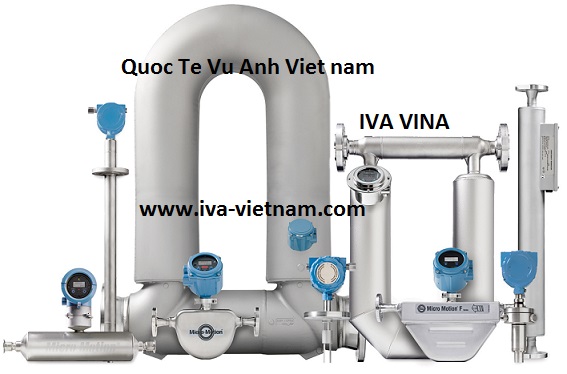|
A gas meter is a specialized flow meter, used to measure the volume of fuel gases such as natural gas and propane. Gas meters are used at residential, commercial, and industrial buildings that consume fuel gas supplied by a gas utility. Gases are more difficult to measure than liquids, as measured volumes are highly affected by temperature and pressure. Gas meters measure a defined volume, regardless of the pressurized quantity or quality of the gas flowing through the meter. Temperature, pressure and heating value compensation must be made to measure actual amount and value of gas moving through a meter.
Several different designs of gas meters are in common use, depending on the volumetric flow rate of gas to be measured, the range of flows anticipated, the type of gas being measured and other factors. There are many types of gas meters:
1. Diaphragm/bellows meter:
These are the most common type of gas meter, seen in almost all residential and small commercial installations. Within the meter there are two or more chambers formed by movable diaphragms. With the gas flow directed by internal valves, the chambers alternately fill and expel gas, producing a near continuous flow through the meter. As the diaphragms expand and contract, levers connected to cranks convert the linear motion of the diaphragms into rotary motion of a crank shaft which serves as the primary flow element. This shaft can drive an odometer-like counter mechanism or it can produce electrical pulses for a flow computer.
Diaphragm gas meters are positive displacement meters
2. Rotary meter:
Rotary meters are highly machined precision instruments capable of handling higher volumes and pressures than diaphragm meters. Within the meter, two figure "8" shaped lobes, the rotors (also known as impellers or pistons), spin in precise alignment. With each turn, they move a specific quantity of gas through the meter. The operating principle is similar to that of a Roots blower. The rotational movement of the crank shaft serves as a primary flow element and may produce electrical pulses for a flow computer or may drive an odometer-like counter
3. Turbine meter:
Turbine gas meters infer gas volume by determining the speed of the gas moving through the meter. Because the volume of gas is inferred by the flow, it is important that flow conditions are good. A small internal turbine measures the speed of the gas, which is transmitted mechanically to a mechanical or electronic counter. These meters do not impede the flow of gas, but are limited at measuring lower flow rates.
4. Orifice meter:
An orifice gas meter consists of a straight length of pipe inside which a precisely known orifice creates a pressure drop, thereby affecting flow. Orifice meters are a type of differential meter, all of which infer the rate of gas flow by measuring the pressure difference across a deliberately designed and installed flow disturbance. The gas static pressure, density, viscosity, and temperature must be measured or known in addition to the differential pressure for the meter to accurately measure the fluid. Orifice meters often do not handle a large range of flow rates. They are however accepted and understood in industrial applications since they are easy to field-service and have no moving parts.
5. Ultrasonic flow meter:
Ultrasonic flow meters are more complex than meters that are purely mechanical, as they require significant signal processing and computation capabilities. Ultrasonic meters measure the speed of gas movement by measuring the speed at which sound travels in the gaseous medium within the pipe. American Gas Association Report No. 9 covers the proper usage and installation of these meters, and it specifies a standardised speed-of-sound calculation which predicts the speed of sound in a gas with a known pressure, temperature and gas composition.
The most elaborate types of ultrasonic flow meters average speed of sound over multiple paths in the pipe. The length of each path is precisely measured in the factory. Each path consists of an ultrasonic transducer at one end and a sensor at the other. The meter creates a 'ping' with the transducer and measures the time elapsed before the sensor receives the sonic pulse. Some of these paths point upstream so that the sum of the times of flight of the sonic pulses can be divided by the sum of the flight lengths to provide an average speed of sound in the upstream direction. This speed differs from the speed of sound in the gas by the velocity at which the gas is moving in the pipe. The other paths may be identical or similar, except that the sound pulses travel downstream. The meter then compares the difference between the upstream and downstream speeds to calculate the velocity of gas flow.
Ultrasonic meters are high-cost and work best with no liquids present at all in the measured gas, so they are primarily used in high-flow, high-pressure applications such as utility pipeline meter stations, where the gas is always dry and lean, and where small proportional inaccuracies are intolerable due to the large amount of money at stake. The turndown ratio of an ultrasonic meter is probably the largest of any natural gas meter type, and the accuracy and rangeability of a high-quality ultrasonic meter is actually greater than that of the turbine meters against which they are proven.
Inexpensive varieties of ultrasonic meters are available as clamp-on flow meters, which can be used to measure flow in any diameter of pipe without intrusive modification. Such devices are based on two types of technology: (1) time of flight or transit time; and (2) cross correlation. Both technologies involve transducers that are simply clamped on to the pipe and programmed with the pipe size and schedule and can be used to calculate flow. Such meters can be used to measure almost any dry gas including natural gas, nitrogen, compressed air and also steam. Clamp-on meters are available for measuring liquid flow as well
6. Coriolis meter:
A coriolis meter is usually one or more pipes with longitudinally or axially displaced section(s) that are excited to vibrate at resonant frequency. Coriolis meters are used with liquids and gases. When the fluid within the displaced section is at rest, both the upstream and downstream portion of the displaced section will vibrate in phase with each other. The frequency of this vibration is determined by the overall density of the pipe (including its contents). This allows the meter to measure the flowing density of the gas in real time. Once the fluid begins to flow, however, the coriolis effect comes into play. This effect implies a relationship between the phase difference in the vibration of the upstream and downstream sections and the mass flow rate of the fluid contained by the pipe.
Again, owing to the amount of inference, analog control and calculation intrinsic to a coriolis meter, the meter is not complete with just its physical components. There are actuation, sensing, electronic and computational elements that must be present for the meter to function.
Coriolis meters can handle a wide range of flow rates and have the unique ability to output mass flow - this gives the highest accuracy of flow measurement currently available for mass flow measurement.Since they measure flowing density, coriolis meters can also infer gas flow rate at flowing conditions.
American Gas Association Report No. 11 provides guidelines for obtaining good results when measuring natural gas with a coriolis meter.
|
 Hướng dẫn mua, sử dụng máy bơm công nghiệp, bơm cứu hỏa, bơm xăng dầu
Hướng dẫn mua, sử dụng máy bơm công nghiệp, bơm cứu hỏa, bơm xăng dầu








![header=[Oval gear meter, Ultrasonic flow meter, Positive displacement meter, turbine meter, rotary meter, mass flow coriolis meter,..:Fuel flow meters, Crude oil meter] body=[<div align='justify' style='height:120px;'><img src='http://iva-vietnam.com/watemark.php?pic=lc-fuel oil flow meter.gif' hspace = '10' align='left'></div>]](http://iva-vietnam.com/watemark.php?pic=lc-fuel oil flow meter.gif)
![header=[Fuel oil meter, LPG gas meter, Gasoline flow meter, Diesel Flowmeter, batch controller, ] body=[<div align='justify' style='height:120px;'><img src='http://iva-vietnam.com/watemark.php?pic=flow meter.gif' hspace = '10' align='left'></div>]](http://iva-vietnam.com/watemark.php?pic=flow meter.gif)












